Catania sits right on Sicily’s eastern coast, and honestly, it’s like nowhere else I’ve been in Italy. The city literally rises from the black lava that once threatened to wipe it out. When Mount Etna erupted back in 1669, lava poured into Catania. Instead of abandoning everything, Sicilians decided to rebuild using the very stuff that nearly destroyed them.
When I wander Catania’s streets, I can’t help but notice its striking black beauty. The buildings, the streets—heck, even the grand Piazza del Duomo—are all made from dark basalt lava stone. That’s why people call it “The Black City.”
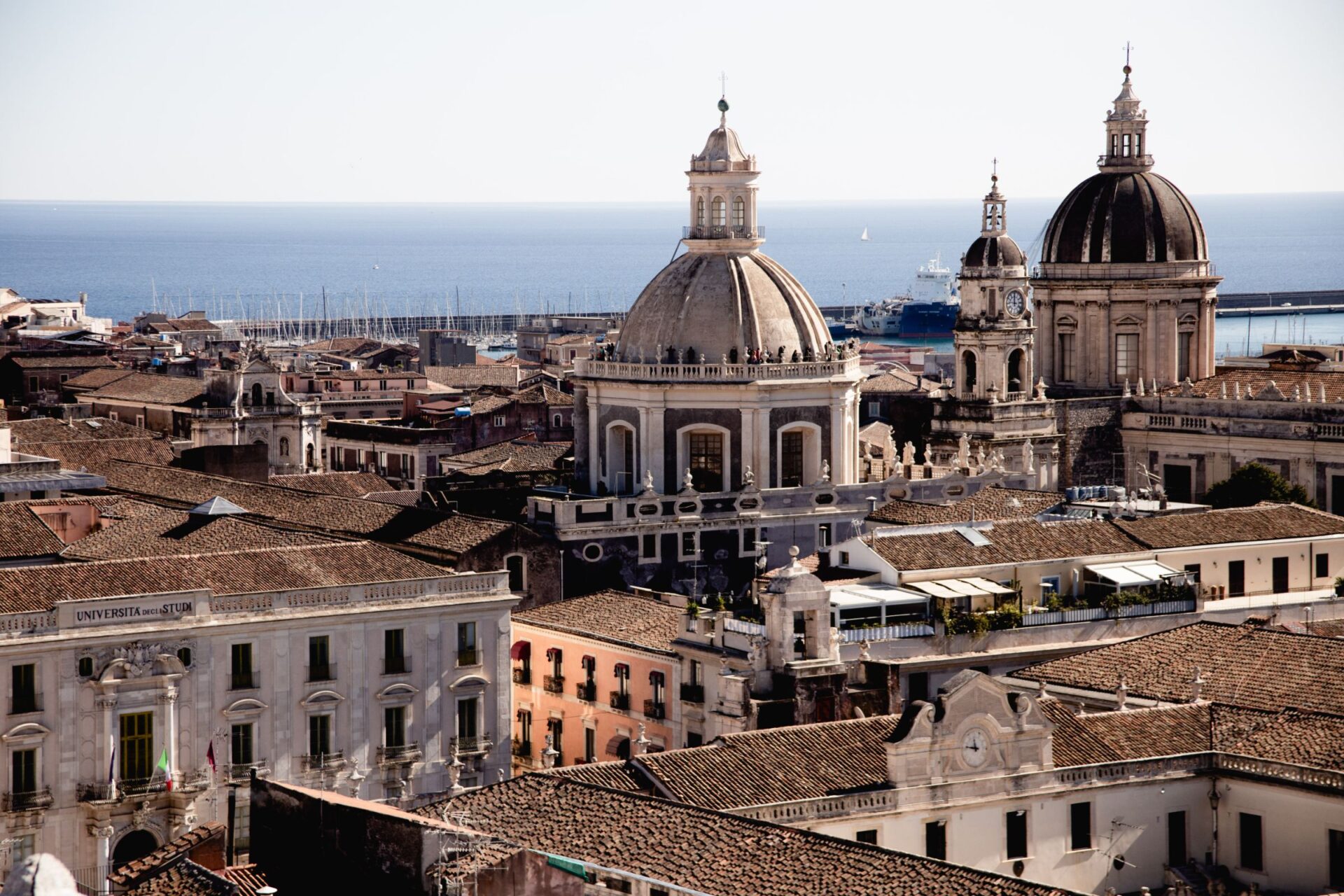
This volcanic heritage makes a dramatic contrast with those bright Sicilian skies and the creamy baroque buildings that popped up after the 1693 earthquake.
Mount Etna looms over everything, both a threat and a blessing. Locals live with the volcano’s moods, and I get the feeling they’ve learned to respect their unpredictable neighbor. They’ve used lava stone from all over the province, turning the city itself into a monument to human grit and adaptation.
The Origins: Catania’s Black Heart
Catania’s whole vibe is shaped by volcanic forces. The city’s black look comes straight from the lava stone pulled from Etna’s flows. It’s a cityscape you just don’t see anywhere else in Sicily.
Mount Etna: The Lifeblood of Catania
Mount Etna towers over Catania like a watchful old giant. At about 11,000 feet, it’s Europe’s highest active volcano, and honestly, it’s impossible to ignore.
Every time I’m in Catania, that volcano dominates the skyline and the city’s mood. Etna’s eruptions have shaped both the land and the culture here.
Locals talk about Etna with a mix of awe and wariness. They call it “Mongibello”—the mountain of mountains. It still erupts regularly, sending up lava fountains and ash clouds you can spot from miles away.
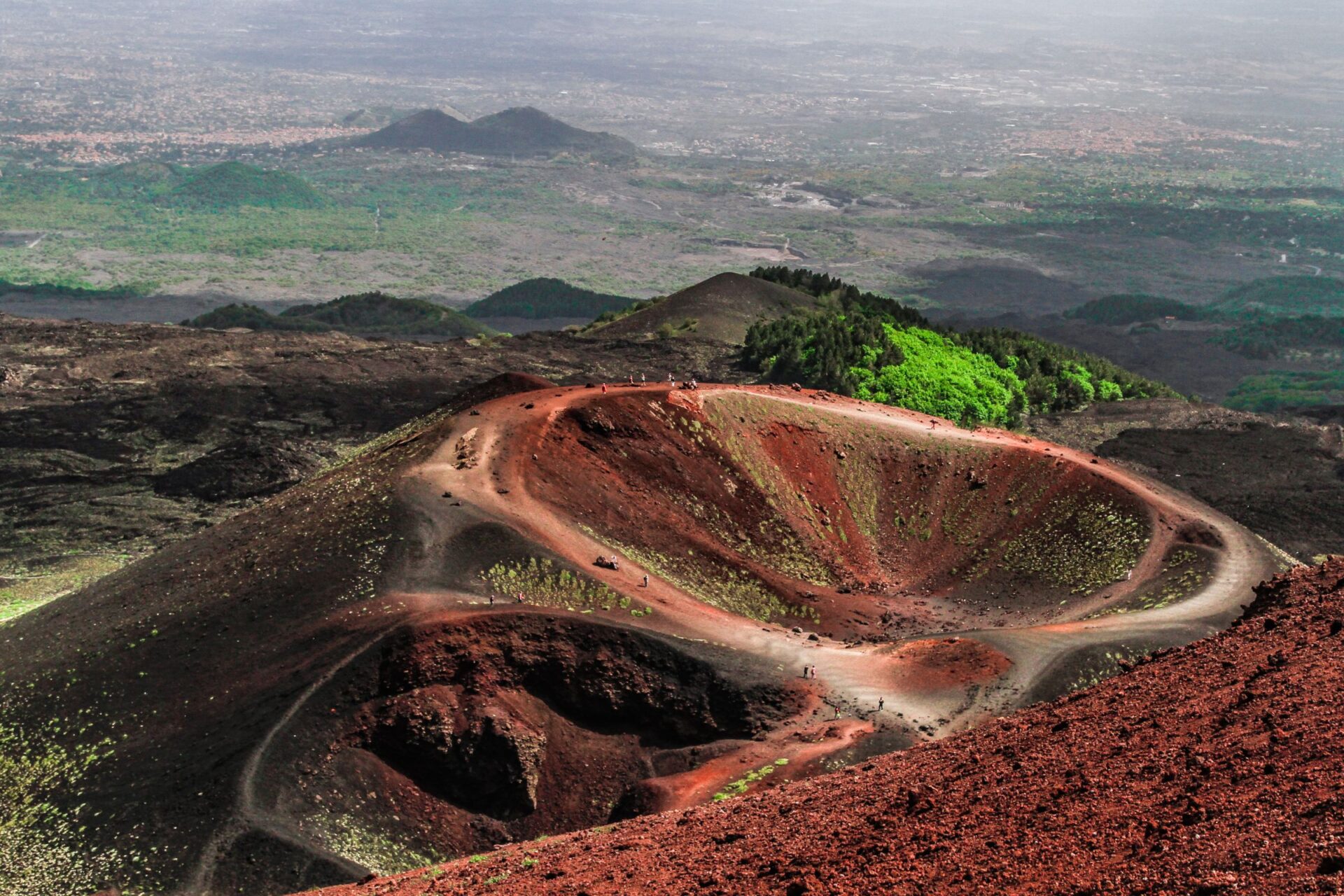
A City Forged by Lava Flows
When I first explored Catania’s old center, the dark basalt buildings really hit me. “The Black City” isn’t just a nickname—it’s everywhere you look.
Lava stone lines the streets, forms the foundations, and decorates the buildings. I’ve run my hands along church walls made of black basalt, feeling the rough cooled magma that once raced down Etna’s sides.
The Romans and Greeks knew this stuff lasted. They quarried the lava flows and built with it, and somehow, those structures have survived centuries of storms and earthquakes.
The Earthquake of 1693 and the City’s Rebirth
The earthquake in 1693 changed everything for Catania. It destroyed much of the city and took thousands of lives.
Afterward, Catania transformed itself. Builders and architects used the ever-present black lava stone to reconstruct the city.
This is how the stunning Baroque cityscape appeared. The mix of dark basalt and white limestone became Catania’s signature.
The Cathedral of Saint Agatha is a perfect example. I’ve spent ages just staring at these buildings, where locals managed to turn disaster into a new kind of beauty using Etna’s own gifts.

Baroque Revival: Architecture and Landmarks
Catania’s architectural flair really took off after the 1693 quake. The city rebuilt itself with that volcanic black lava stone from Etna—it’s everywhere you look.
Catania’s Baroque Architecture
Walking through Catania feels like wandering an open-air Baroque museum. After the earthquake, architects rebuilt in the Sicilian Baroque style, leaning hard on the black lava stone.
The contrast between the dark volcanic rock and the white limestone details on the facades is wild. That’s where “The Black City” nickname comes from.
The city’s rebirth turned tragedy into something gorgeous. Giovanni Battista Vaccarini and other architects designed palaces, churches, and public spaces with elaborate decorations and curvy facades.
If you visit, look up. There are playful cherubs, detailed reliefs, and those grand columns on almost every historic building.
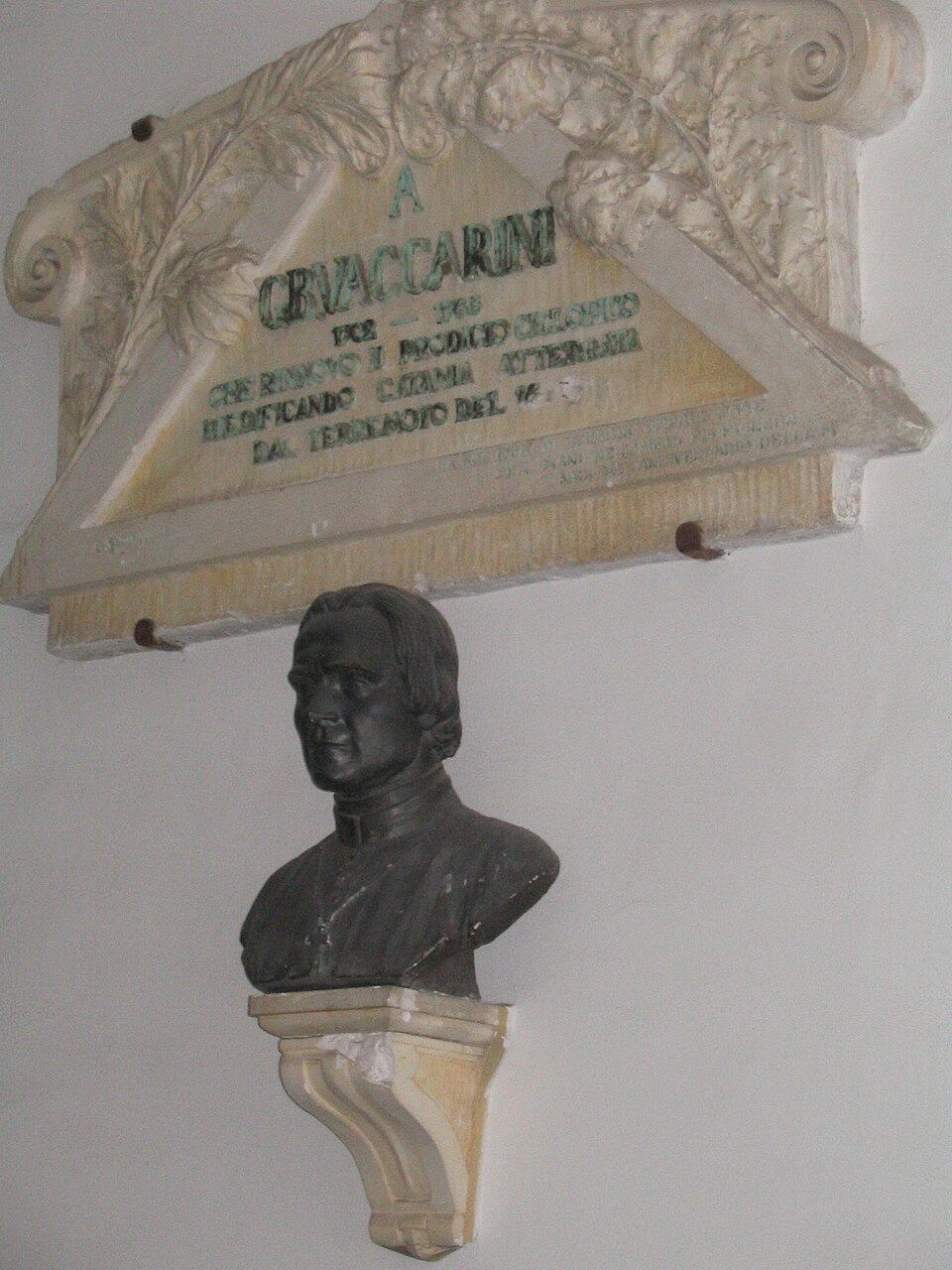
Image Source: Wikimedia Commons
The Cathedral and Piazza del Duomo
The Cathedral of Sant’Agata anchors Piazza del Duomo, right at the heart of Catania’s Baroque revival. The church was rebuilt after the earthquake, and yes, it’s all that signature black lava stone.
Inside, I found lovely chapels, impressive art, and the shrine of Saint Agatha, who’s basically the city’s spiritual guardian. The facade mixes Norman and Baroque touches for a look you won’t find anywhere else.
The piazza is something else, too. The Elephant Fountain (u Liotru)—a black lava elephant balancing an Egyptian obelisk—stands right in the middle. It’s quirky and memorable, and now it’s Catania’s symbol.
Around the square, you’ll see more Baroque gems like the Palazzo degli Elefanti (City Hall) and the Palazzo dei Chierici. I could lose track of time here, sipping coffee in a sidewalk café and just soaking up the atmosphere.
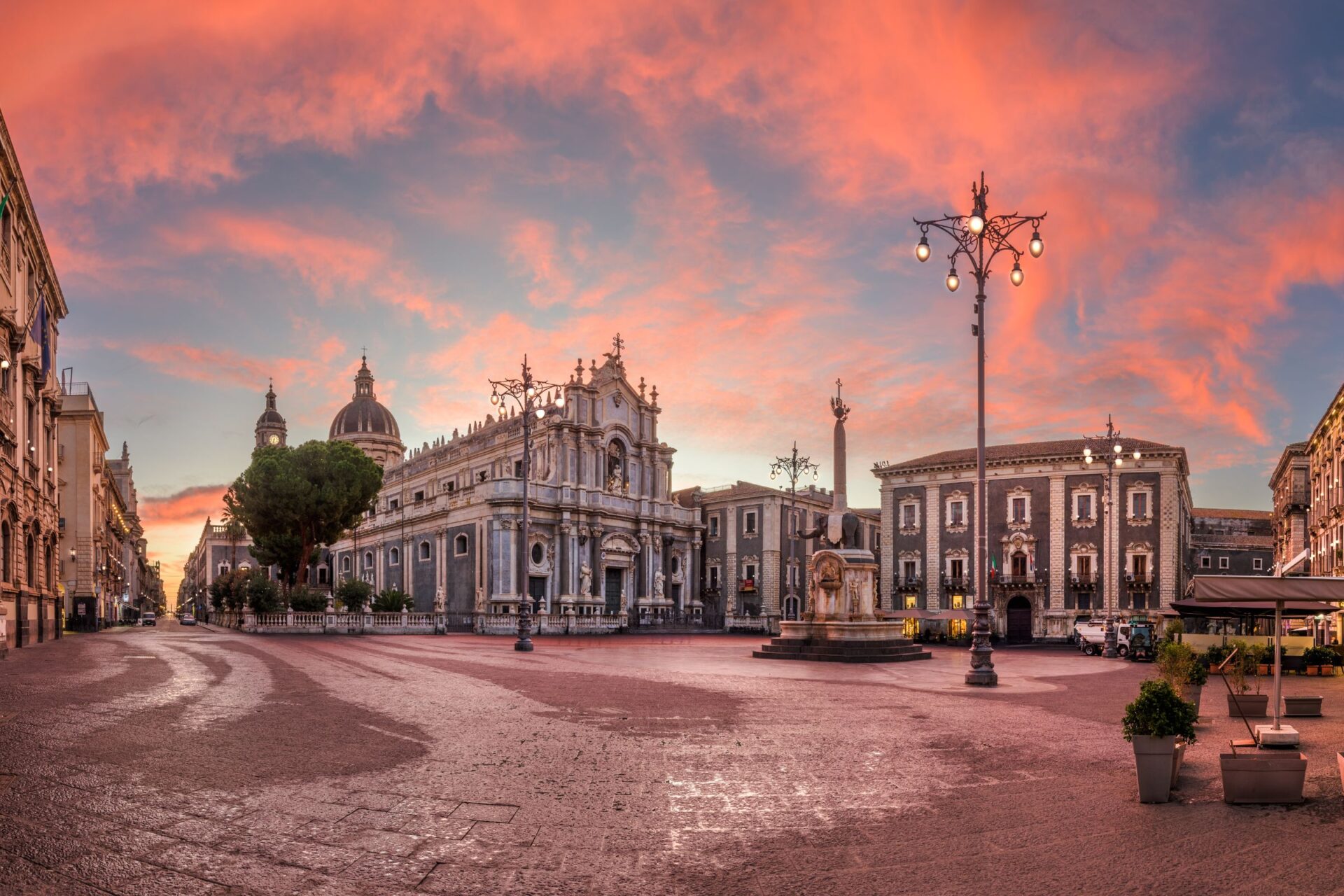
Castello Ursino: Fortress on Lava
Castello Ursino proves just how tough Catania can be. Emperor Frederick II built this fortress in the 13th century right on the coast, but now it sits inland—thanks to Etna’s lava flows.
When I toured the castle, I learned that the 1669 eruption surrounded it with lava but didn’t destroy it. These days, it houses the Civic Museum, filled with archaeological finds and art.
The castle’s thick stone walls and round towers hint at its military past. It’s a stark, almost severe contrast to the fanciful Baroque buildings nearby.
Walking those stone corridors and peering from the battlements, I could almost hear echoes of the centuries that unfolded inside.
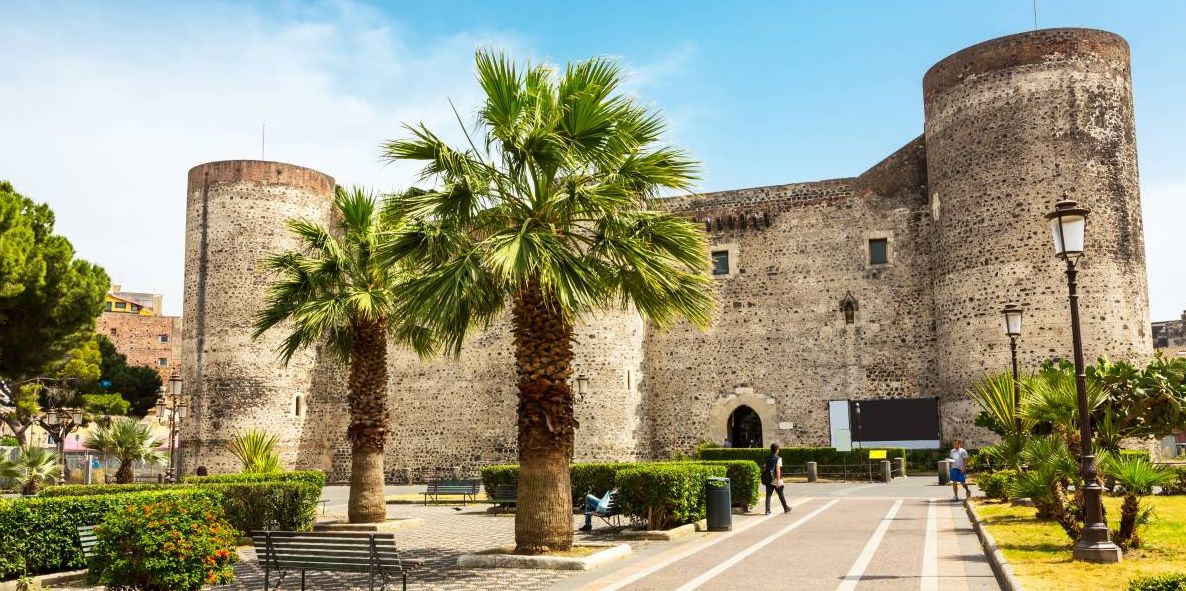
Image Source: Wikimedia Commons
Via Etnea: Iconic Shopping Street
Via Etnea runs straight from Piazza del Duomo toward Mount Etna, lining up perfectly so the volcano looms at the end. It’s Catania’s main drag for shopping and people-watching.
I spent an afternoon strolling this three-kilometer boulevard. The black lava stone buildings have ornate balconies and detailed facades. There’s a mix of trendy shops, old-school cafés, and little boutiques.
Piazza Università is a highlight along the way, with the University Palace’s dramatic curved facade.
The street comes alive in the evenings. Locals and visitors fill the sidewalks for the evening passeggiata, just out to see and be seen. I recommend grabbing a granita at a historic café and watching city life unfold with Etna in the distance.
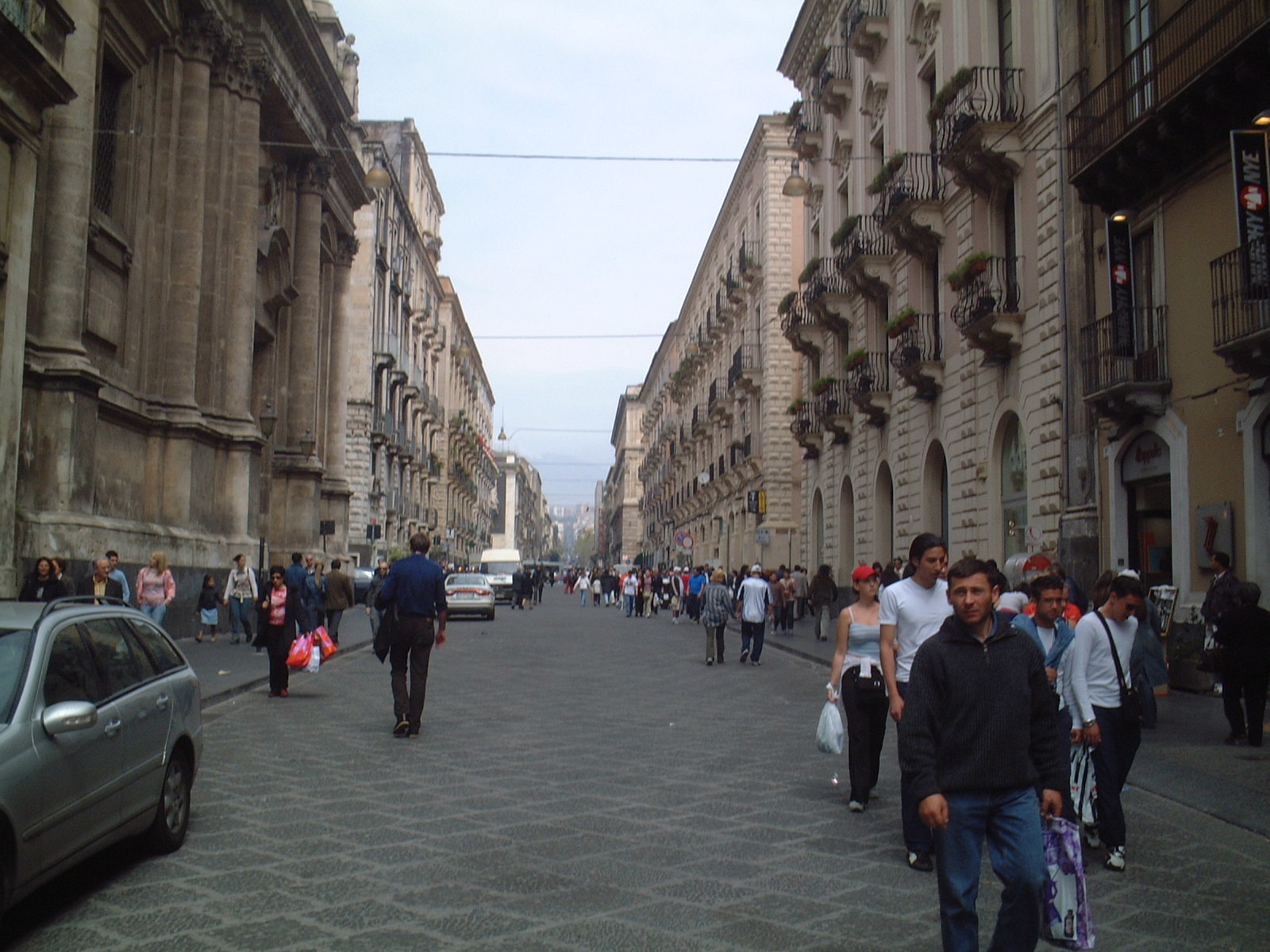
Image Source: Flickr
Living With the Volcano: Culture, Myth, and Nature
Mount Etna’s presence colors every part of life in Catania and the neighboring villages. The volcano shapes local culture, inspires wild myths, and builds a unique connection between Sicilians and their fiery mountain.
Daily Life in the Shadow of Etna
Living near an active volcano isn’t easy, but it’s got its perks. Locals have this saying: “The people of Etna never know where it will rain sand, where the ash will fall.” That uncertainty has made people here pretty resilient.
Everywhere I walk, I see volcanic material. Black lava stone buildings make Catania “The Black City.” The volcanic soil grows some of the best citrus, grapes, and pistachios I’ve ever tasted.
Residents talk about “the mountain” almost like it’s a person. I met farmers who described Etna as a mother or father—someone you have to keep on your good side.
Mythology: Typhon and Hephaestus
Etna’s eruptions fueled some wild Greek myths. Legend says Zeus trapped the monster Typhon under Etna after a huge battle. Typhon’s fiery breath and struggles supposedly cause the eruptions.
Another story ties Etna to Hephaestus (or Vulcan for the Romans), the blacksmith god. Local museums display artifacts that tell this tale—Hephaestus supposedly set up his forge right inside the mountain.
These myths have shaped Sicilian identity for ages. Even now, festivals celebrate these stories with parades and performances. The volcano’s occasional rumbles remind everyone of those ancient legends.
Etna isn’t just a mountain here—it’s almost a character in Sicily’s story.
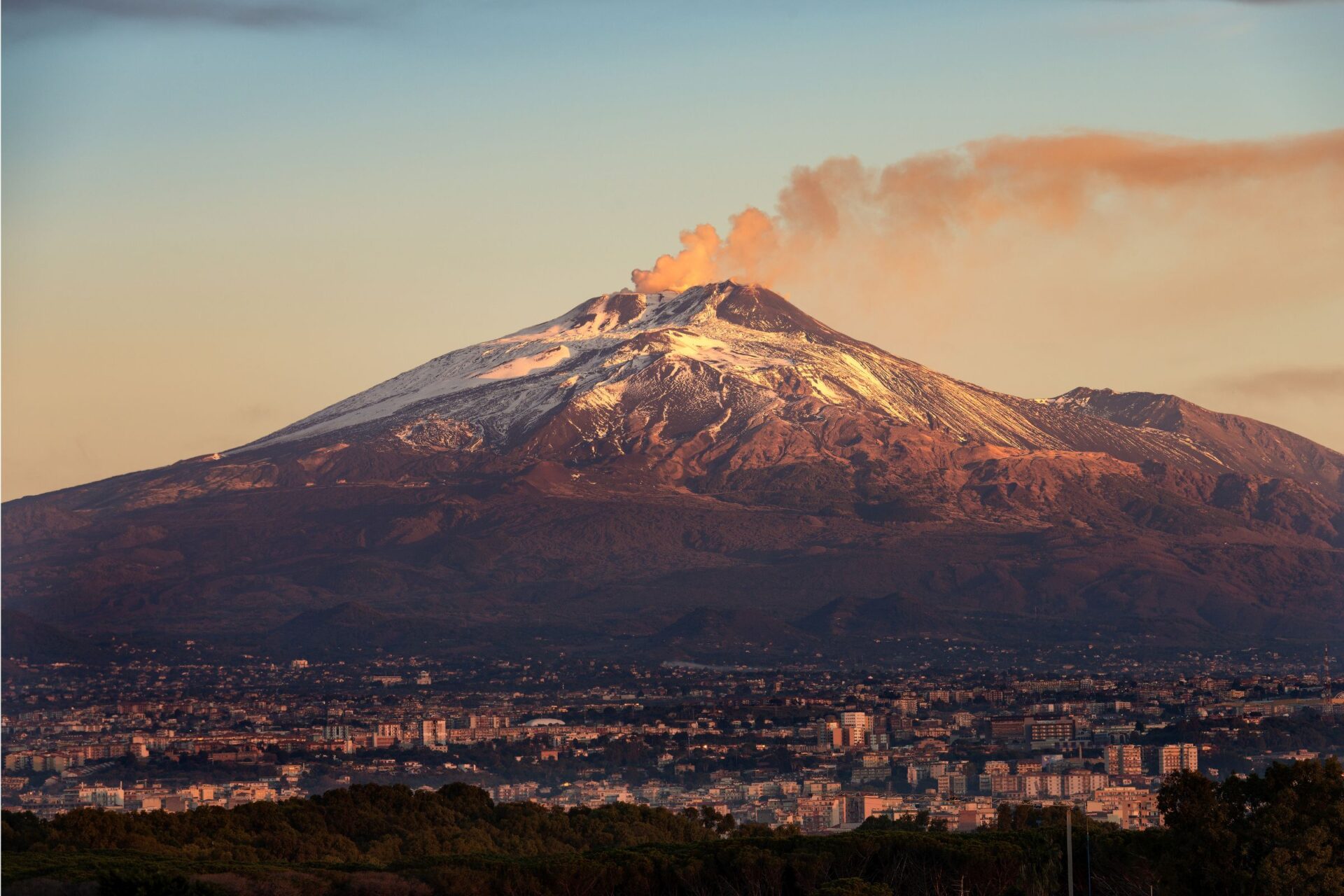
Nicolosi and Volcanic Villages
Nicolosi perches on Etna’s slopes and acts as the main gateway to the volcano. I stayed there and saw firsthand how volcanic activity shapes daily life.
Buildings use lava stone, giving the village its distinct black look. Nicolosi has been rebuilt more than once after eruptions, and that says a lot about the locals’ spirit.
From Nicolosi, I checked out other volcanic villages like Zafferana Etnea. People there make honey with a unique mineral taste, thanks to the volcanic soil. The Valle del Bove offers jaw-dropping views—a massive horseshoe-shaped valley from ancient collapses.
The Silvestri Craters are easy to reach by car. Walking along these old, inactive craters gives you a sense of Etna’s power without needing to be an expert climber.
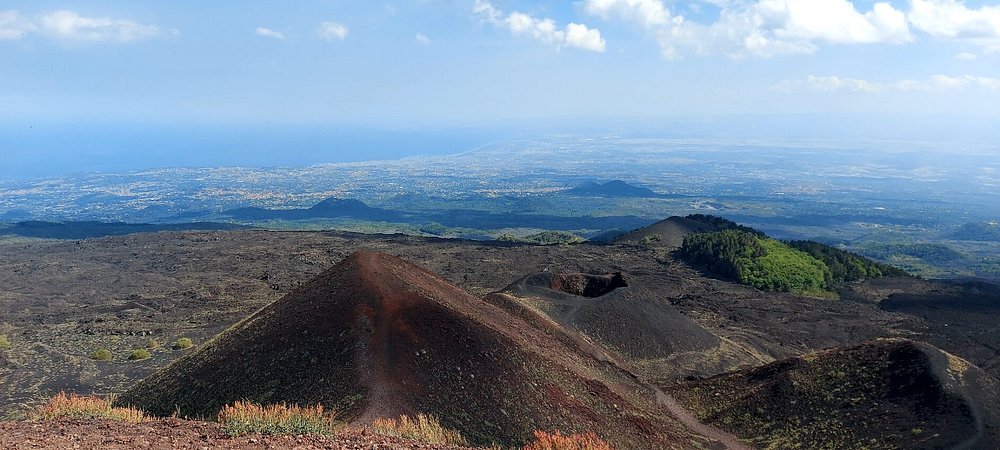
Image Source: Tripadvisor
Gastronomy and Local Life: Savoring Catania
Catania’s food scene is a feast of Mediterranean flavors and Sicilian tradition.
Catania’s Legendary Fish Market
La Pescheria, the historic fish market, pulses with energy every morning near Piazza del Duomo. I love wandering through before 11 AM, when the action is at its peak.
Fishmongers shout out their catches in Sicilian dialect—swordfish, sea urchins, you name it. The market has been the heart of food culture here for generations.
It’s not just about the fresh seafood. It’s the slice of daily life: locals haggling, sharing gossip, and swapping recipes. Chefs from nearby restaurants often show up early to pick the best catch.
All around, other stalls sell produce, cheeses, and spices that go perfectly with seafood.
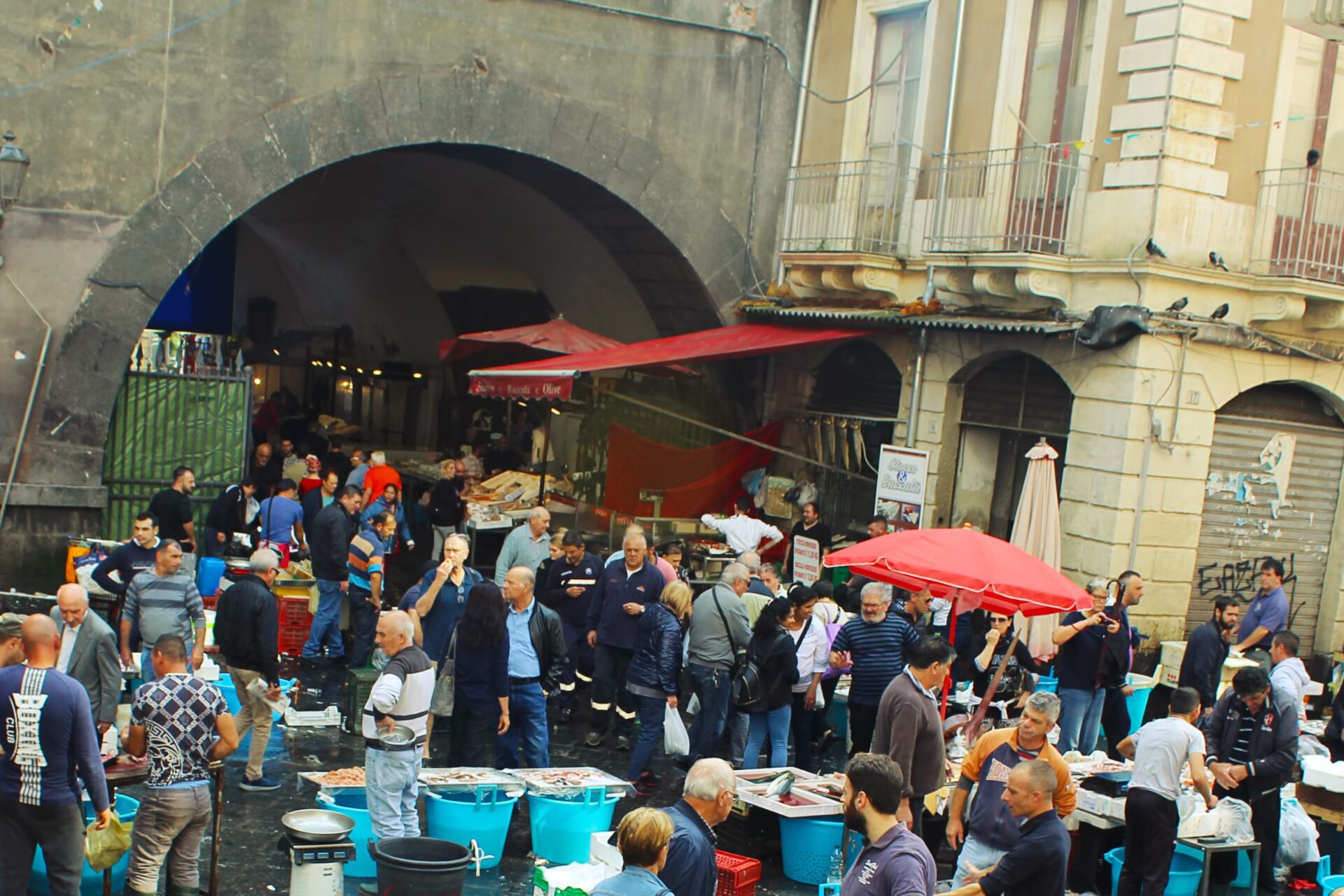
Dining and Nightlife: Bars and Restaurants
Catania’s restaurants blend classic Sicilian cooking with some creative twists. Many of them set up shop inside those historic black lava stone buildings—seriously, it adds to the whole vibe.
If you want real pasta alla Norma—eggplant, tomatoes, ricotta salata—try Trattoria del Cavaliere near Via Etnea. That dish started here in Catania, inspired by Bellini’s opera.
Nightlife centers around Piazza Teatro Massimo and Via Crociferi. Bars fill historic buildings and serve up excellent local wines from Etna’s volcanic slopes.
My favorite way to end the day? Grab a granita at Caffè Sicilia, then people-watch at a piazza bar. Wines worth a try:
- Etna Rosso (red)
- Etna Bianco (white)
- Nerello Mascalese (that’s the local grape)
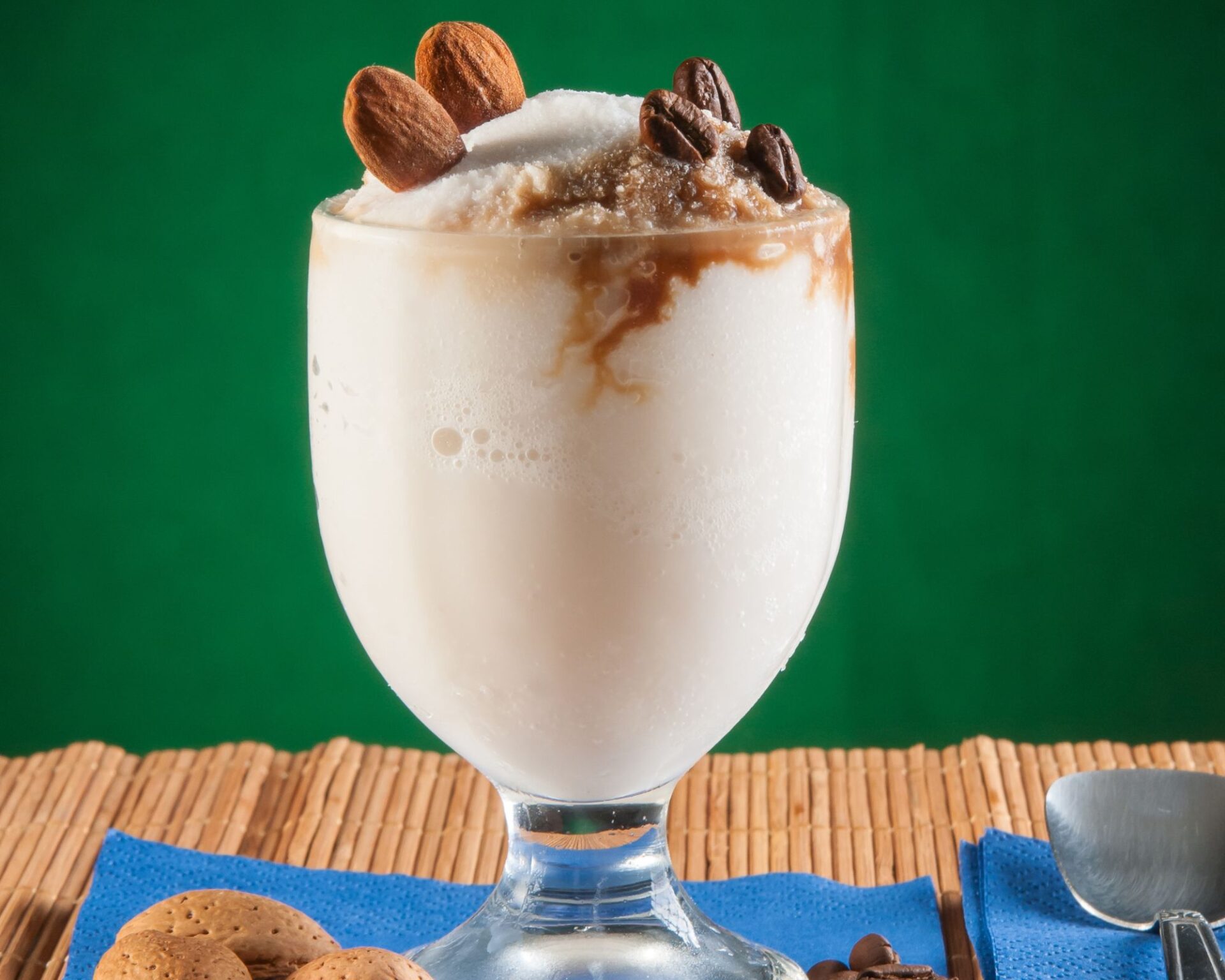
Street Food and Sicilian Sweets: Cannoli and More
Catania’s street food scene bursts with affordable, authentic flavors. The arancini here? They’re usually conical—locals say it’s a nod to Mount Etna.
I always make a point to grab a cipollina, which is a flaky pastry stuffed with onions, tomato, and cheese. Scacciata, a stuffed flatbread, is another must-try from the bakeries along Via Etnea.
Seafood lovers, you can’t go wrong with freshly fried fritto misto near the fish market. The mix of just-caught seafood, sizzling hot, is unbeatable.
Sicilian sweets really deserve their own spotlight. Cannoli in Catania come with crisp shells and sweet ricotta filling, sometimes topped with pistachios or candied fruit. If you want the best, head to Pasticceria Savia—it’s a classic.
Don’t skip cassata siciliana (that ricotta cake) or granita con brioche for breakfast. There’s something special about that icy treat paired with a soft, buttery bun. These desserts are a delicious mix of Sicily’s Arab and Spanish heritage.

Exploring Beyond: Nature, Sea, and Vineyards
Catania sits at the edge of wild, natural escapes. Mount Etna looms nearby, shaping landscapes where both adventure seekers and folks who just want to relax can find their happy place.
Ionian Sea Adventures
The Ionian Sea sparkles against Catania’s black volcanic coast. I love spending mornings at La Playa, the city’s main stretch of sand that runs almost three miles south of downtown.
If you’re into water sports, there’s a lot to do. I’ve tried scuba diving along the volcanic coastline—those jagged lava rocks hide all kinds of marine life. Local operators run boat tours that show off the dramatic clash of black lava and blue water.
Fishing is still a big deal here. If you hit the fish market early, you’ll see just how much the sea provides. For a quieter vibe, the fishing villages of Aci Trezza and Aci Castello welcome you with their famous sea stacks rising out of the waves.
Agriculture on Lava-Rich Soils
Volcanic soil around Catania makes the land incredibly fertile. This mineral-rich earth gives everything grown here a unique flavor.
Local farms grow vegetables that thrive in volcanic conditions. Sicilian blood oranges owe their intense color and taste to these soils. I’ve visited farms where pistachios, almonds, and prickly pears grow side by side.
Many farms open their doors for agriturismo stays. You can:
- Join in during harvest season
- Try your hand at traditional farming
- Savor farm-to-table meals
- Take home farm-fresh treats
The mix of black earth and bright produce is striking, especially in spring when wildflowers cover the plains.
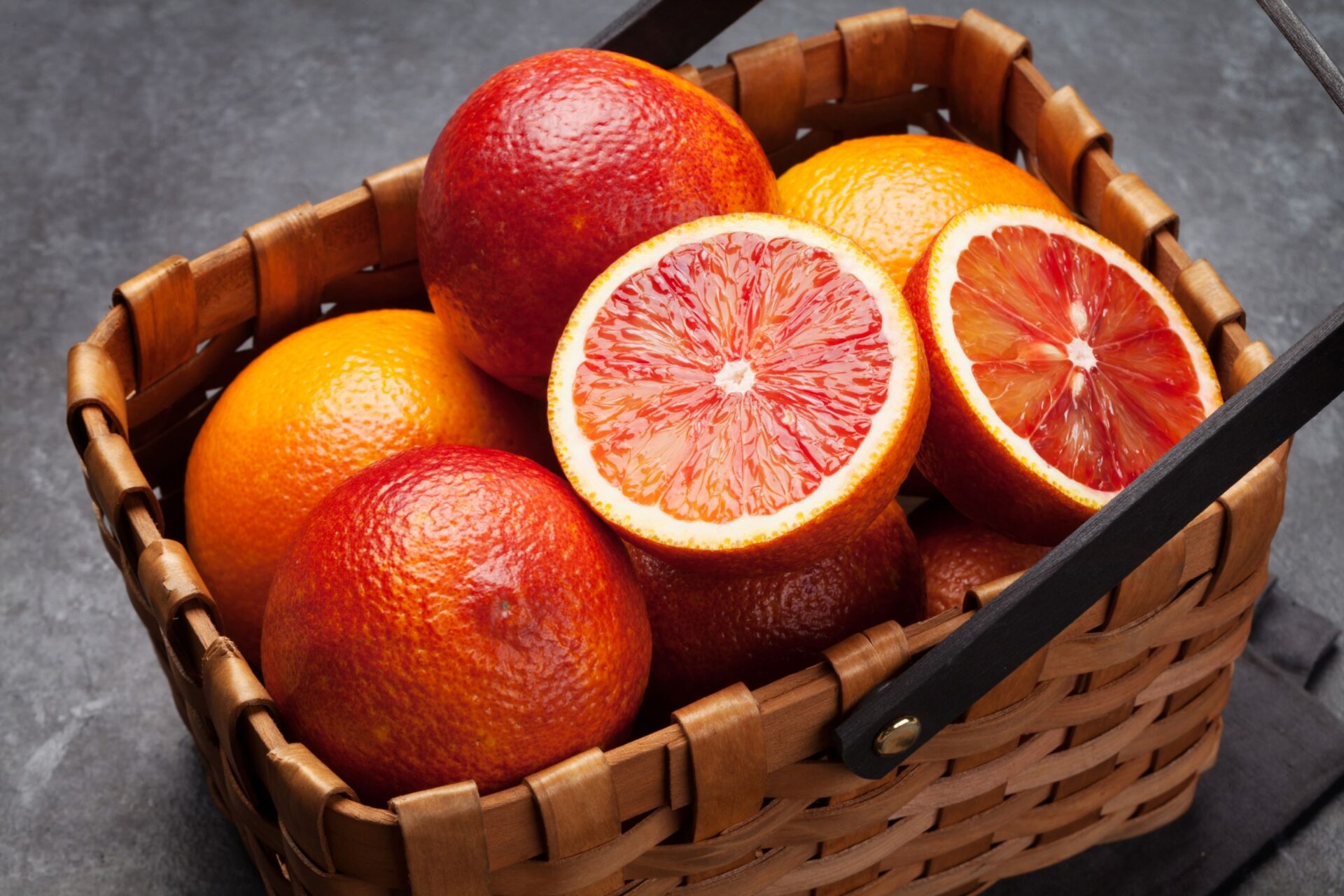
Vineyards and Orchards on Etna’s Slopes
Mount Etna’s slopes are home to some of Sicily’s most distinctive vineyards. The volcanic ground gives these wines a minerality you just don’t find elsewhere.
I’ve wandered through several wineries at different elevations. Each spot produces its own style of wine. The local Nerello Mascalese grape thrives here, making reds that can stand toe-to-toe with Burgundy.
Vineyards welcome visitors for tastings and tours. My top picks:
- Tenuta delle Terre Nere—organic wines with killer views
- Pietradolce—traditional winemaking on ancient terraces
- Benanti—a family winery leading Etna’s wine revival
Etna’s orchards also grow cherries, apples, and chestnuts. When autumn comes, chestnut festivals pop up, and locals roast the nuts over open fires.
Day Trips: Taormina and Giardini Naxos
Just north of Catania, Taormina and Giardini Naxos shine as eastern Sicily’s gems. Both are easy day trips when you need a break from the city buzz.
Taormina sits high on cliffs above the sea. I spent hours in its ancient Greek Theater, with Mount Etna perfectly framed in the background. The pedestrian Corso Umberto is lined with shops and cozy cafes.
Giardini Naxos offers a laid-back vibe. Its long sandy beach and clear water make it perfect for a slow afternoon. It was the first Greek colony in Sicily, and you can still spot ancient ruins. The seaside promenade, with restaurants serving fresh seafood, is one of my favorite places to stroll.
Both towns show off different sides of Mount Etna and how people have learned to live with the volcano over centuries.
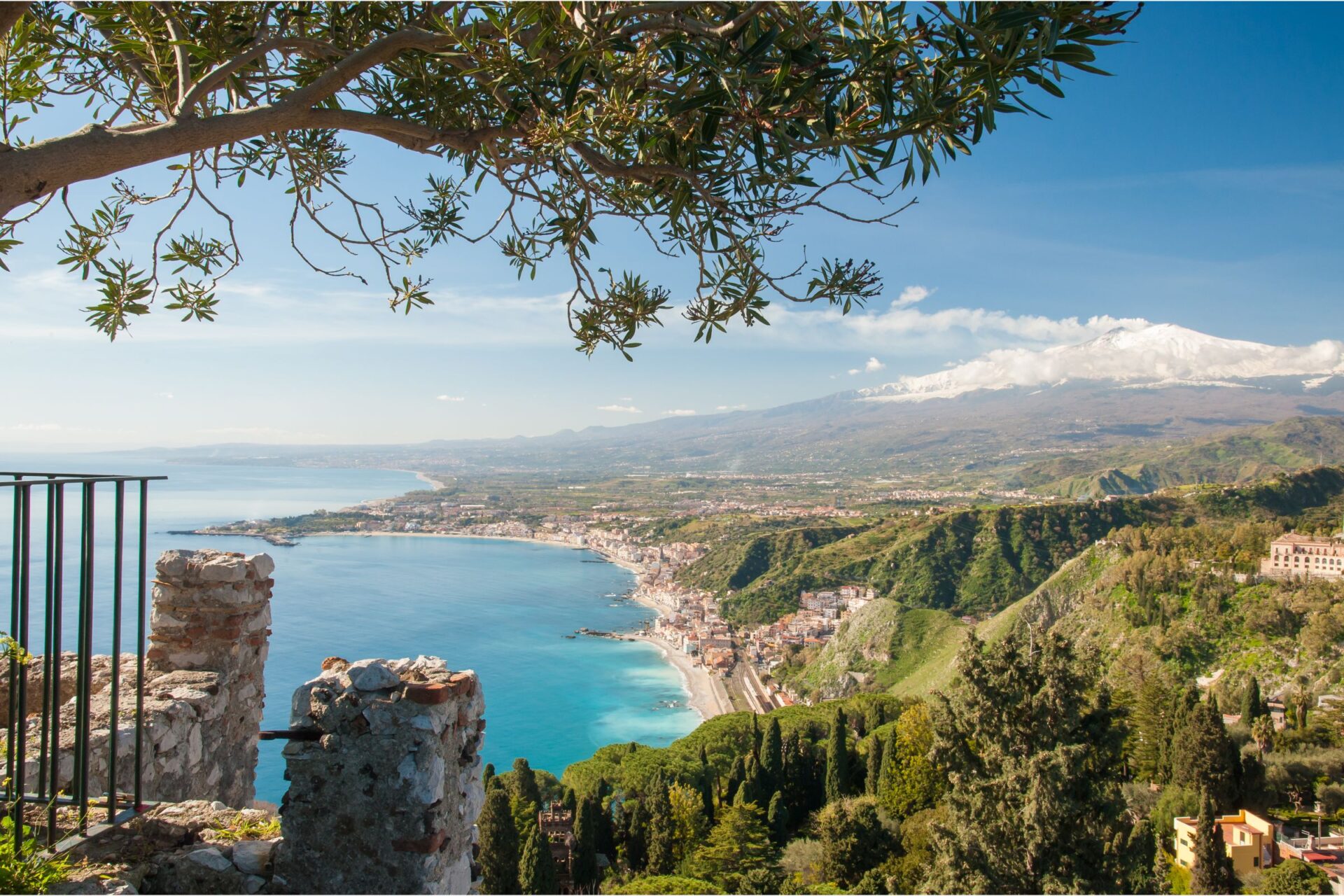
The Journey Up Mount Etna
Climbing Europe’s most active volcano is an adventure you won’t forget. Whether you prefer a mechanical ascent or challenging hikes, Mount Etna offers several ways to get up close to its fiery heart.
Cableway and Hiking Routes
Most people start their Etna journey at Rifugio Sapienza, sitting 1,900 meters up. I found the cableway here—it zips you up to 2,500 meters in about 15 minutes, and the views of Sicily and the sea are unreal.
If you want more adventure, hiking trails branch out from the upper cableway station. The most popular path continues by special vehicles up to 2,900 meters, where guides lead you to safe spots near the summit craters.
Make sure to wear sturdy shoes and pack layers. Even in summer, it gets cold and windy up there.
The Valle del Bove Experience
Valle del Bove always leaves me speechless. This giant, horseshoe-shaped valley on Etna’s eastern side formed after ancient eruptions and collapses.
The valley stretches about 5 kilometers wide and 7 kilometers long, with sheer walls that soar up to 1,000 meters. Standing on the rim, I can’t help but feel tiny compared to the vast volcanic landscape.
Guided tours are the safest way to explore here. Valle del Bove’s stark beauty—hardened lava, black soil, almost lunar views—makes it a dream for photographers.
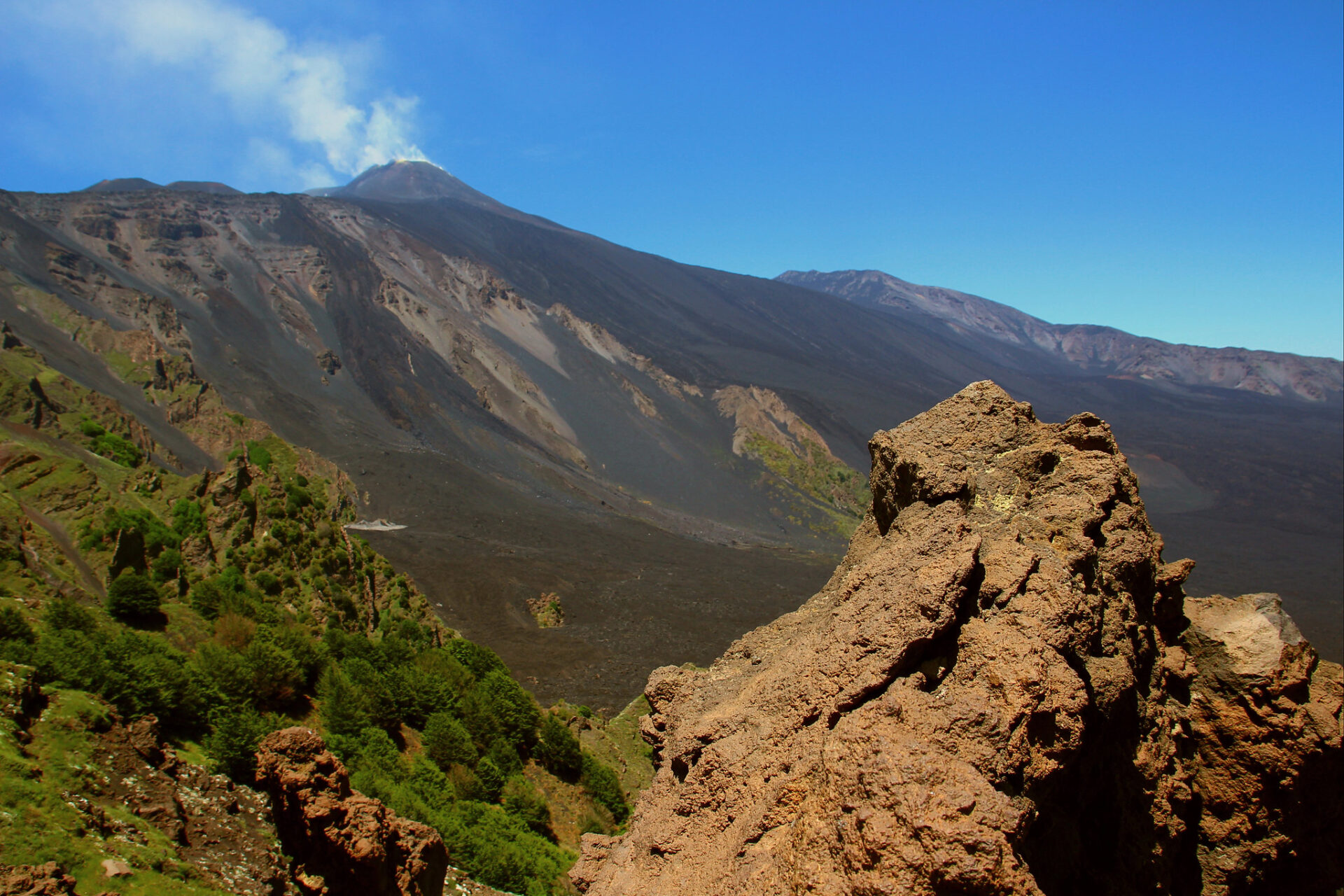
Image Source: Flickr
Silvestri Craters: A Window Into the Volcano
The Silvestri Craters sprang to life during the 1892 eruption, giving people an easy way to check out Etna’s volcanic wonders. You’ll find them close to Rifugio Sapienza, and thankfully, you don’t have to hike for hours to get there.
I usually wander around both the lower and upper craters. There’s something surreal about standing right on that reddish-black volcanic soil—it crunches under your shoes.
Sometimes, little puffs of steam drift up from vents here and there. It’s a subtle reminder that this mountain isn’t as sleepy as it looks.
Kids seem to love roaming these craters, so families often pick this spot before deciding if they’ll climb higher. Around the area, you’ll spot souvenir shops and a few restaurants.
I’ve tried local treats here, like honey that’s flavored with wildflowers from Etna. It’s honestly worth a taste if you get the chance.

